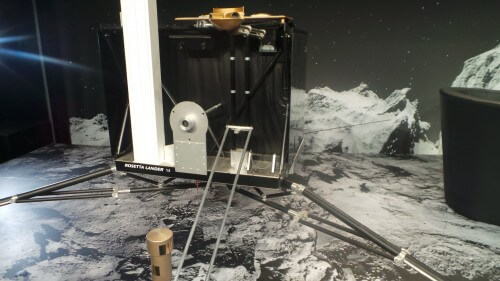What are those who worked on the development of the Philae comet lander supposed to feel now that their colleague is facing "eternal sleep" after a decision was made to give up trying to contact him?
Written by Monica Grady, Professor of Planetary and Space Sciences, The Open University (UK)

How do you say goodbye to a valued colleague with whom you have worked closely for almost two decades? Maybe organize a farewell party, collect money for a joint gift or maybe just a bouquet of flowers? If the colleague moves to a new and exciting job, his retirement is cheerful and perhaps mixed with envy as well as regret. But what are those who worked on the development of the comet Philae lander supposed to feel now that their colleague is facing "eternal sleep" after a decision was made to give up trying to contact him?
The Rosetta spacecraft released Philae for a landing on comet 67P Churyomov Garsimenko on November 12, 2014. Although the landing did not go exactly according to plan, Philae was still able to operate for nearly 70 hours before its main batteries ran out, accomplishing nearly all of its science objectives. The awkward landing prevented Philae's solar panels from recharging the batteries. The scientists hoped that when the comet approached the Sun, the increase in light levels would be able to wake up the lander, and it did happen: on June 13, 2015, Rosetta received a signal from Philae, indicating that the batteries were full and that the lander was ready for a new era of research.
Unfortunately, in order for Philae to function effectively, it is necessary for it to be in stable contact with Rosetta. And it didn't happen, maybe because Philae's transmitter was damaged on landing. Only intermittent communication was possible and even that ceased after Rosetta was forced away from 67P as it approached the Sun. This is because the large amount of dust flowing from the comet's nucleus posed a danger to Rosetta. Imagine navigating a car through a heavy blizzard with no way to clear the windshield, such was the effect of the dust. The spacecraft had to retreat to a safe distance of about 300 km from the surface, a distance too great to receive the signals from Philae.
There was another opportunity to maintain communication between the two spacecraft when the comet reached the closest point to the sun in its orbit and then began to move away and its activity decreased. Rosetta was already within wonderful signal reception range, but unfortunately not a chirp was heard. Rosetta has been within listening distance since January, and no signal has yet been received.
Roasted, buried or frozen?
We do not know for sure why Philae was unable to transmit. The transmitter may have been damaged, the antennas may have been dislodged and pointed in the opposite direction, or massive amounts of dust ejected from the comet's nucleus covered the solar panels and prevented them from recharging. It is possible that some of the dust found its way into the internal mechanism of the lander, plugging a vital component. Or the ice under the lander went through takeoff - a direct transition from solid to gas without a liquid phase, which caused it to fall.
Other possibilities are that the ice cliff that shadowed Philae collapsed and buried her, or that the strong sunlight burned the electronic components. Unfortunately the communication problem cannot be solved so it doesn't matter what caused the wireless silence. This is disappointing, because there will be no more opportunity to receive more information from the lander - but so much information was returned in the first few days that Philae scientists will be busy for a long time analyzing the findings.
But you must not give up. Over the next six months, Rosetta will orbit closer to the comet, and in August it will be in a position to directly observe Philae. If this happens, we should be able to deduce why the communication was lost. It will also help us to interpret the data recorded by the instruments, and we will also be able to see the landscape where Philae lies.
The scientists will try to observe Philae while Rosetta itself is still in orbit. In September, she will make a controlled landing on the comet, and it will be a glorious end to a one-of-a-kind mission.
to the article on The Conversation website
